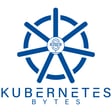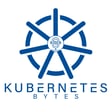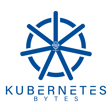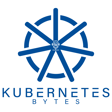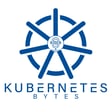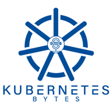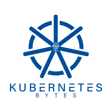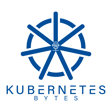
Unleashing the power of KubeVirt - Running Containers and VMs on Kubernetes
In this episode of Kubernetes Bytes, Ryan and Bhavin sit down with Sachin Mullick and Peter Lauterbach - the Product Management team at Red Hat focused on Red Hat OpenShift Virtualization and the open-source KubeVirt project and talk about how users can run containers and virtual machines side-by-side on the same Kubernetes cluster. They discuss the benefits of having a unified control plane for all your applications and the different features that enable users to run their applications in production. They also talk about some customers that have implemented this technology in production. Listen to learn more about how you can get started with KubeVirt and run your VMs alongside your Kubernetes pods on your Kubernetes or OpenShift clusters.
- 03:27 - News Segment
- 13:54 - KubeVirt Interview
- 01:06:12 - Takeaways
The Motley Fool:
Save $110 off the full list price of Stock Advisor for your first year, go to http://www.fool.com/kubernetesbytes and start your investing journey today!
*$110 discount off of $199 per year list price. Membership will renew annually at the then current list pric
Show Notes:
1. Kube by Example - https://kubebyexample.com/
2. Ask An OpenShift Admin - https://youtube.com/playlist?list=PLaR6Rq6Z4IqdsG6b09q4QIv_Yq5fNL7zh
3. https://kubevirt.io/
4. https://www.redhat.com/en/technologies/cloud-computing/openshift/virtualization
Cloud-Native News:
1. New Security Startup - Stacklok - https://techcrunch.com/2023/05/17/kubernetes-and-sigstore-founders-raise-17-5m-to-launch-software-supply-chain-startup-stacklok/
2. Traefik Lab announces Traefik Hub - Also raised $11M https://techcrunch.com/2023/05/17/traefik-labs-launches-traefik-hub-a-kubernetes-native-api-management-service/
3. KSOC releases the KBOM standard - https://tech.einnews.com/pr_news/629861155/ksoc-releases-the-first-kubernetes-bill-of-materials-kbom-standard
4. Upbound announces managed Crossplane service - https://www.infoq.com/news/2023/05/upbound-managed-control-plane/
5. Kubernetes 1.27 StatefulSet auto deletion for PVCs to beta https://kubernetes.io/blog/2023/05/04/kubernetes-1-27-statefulset-pvc-auto-deletion-beta/
6. Cost reduction CAST AI company focuses on reducing compute costs running generative AI models on k8s https://siliconangle.com/2023/05/18/kubernetes-firm-cast-ai-adds-support-reducing-generative-ai-deployment-costs/
7. Vault secret store operator https://thenewstack.io/hashicorp-vault-operator-manages-kubernetes-secrets/
8. Managed Kafka or Run it yourself ? https://thenewstack.io/kafka-on-kubernetes-should-you-adopt-a-managed-solution/
9. Cool usecase - edge k8s - robots picking fruit - https://thenewstack.io/fruit-picking-robots-powered-by-kubernetes-on-the-edge/
10. Knative 1.10 release https://knative.dev/blog/releases/announcing-knative-v1-10-release/ (4-25 missed it)
